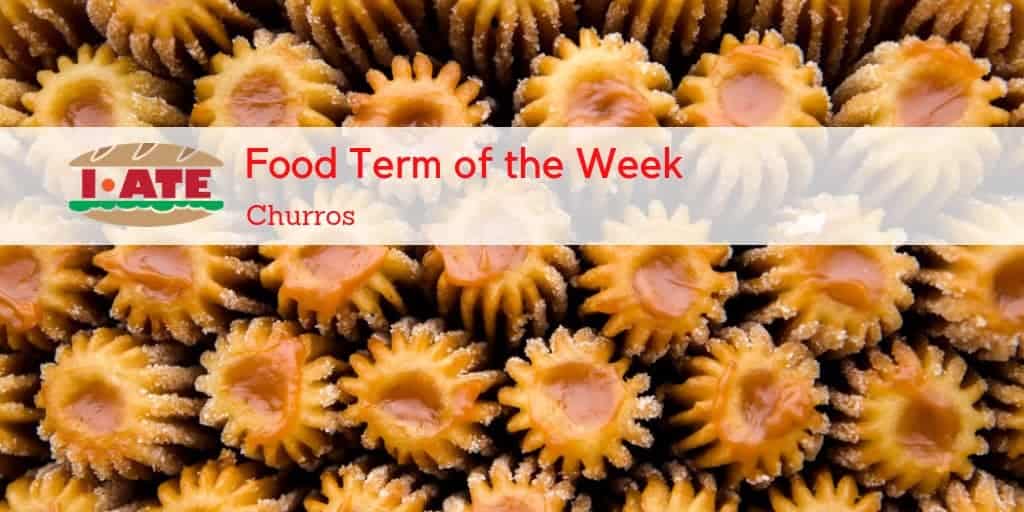
The churro is a dough based on wheat flour cooked in oil. Churros are usually eaten freshly fried as breakfast or snack, accompanying hot drinks such as hot chocolate (this combination is known as “chocolate con churros”) or coffee with milk. They are a popular sweet in Spain, Portugal, France, Latin America, Philippines, Belgium, Morocco, Lebanon, Indonesia, and some areas of the United States.
The origin of the churros is unknown. One theory says that they were exported from China to Europe by the Portuguese. Among the new culinary techniques they brought, was included the modification of the mass of youtiao, also known as youzhagui in southern China. This modification has to do with the design of the dough, since they are produced through the form “star”. Another theory holds that churros were invented by Spanish shepherds to replace fresh bread. The dough of the churros is easy to produce and fry in an open fire in the mountains, where the shepherds lived most of the time.

A churro consists of a dough composed of flour, water, and salt. Once the dough is made, it is placed in a cylindrical device similar to a pastry sleeve and pushed with a piston on a nozzle where it comes out by extrusion, and with cross section in the shape of a star. Finally, they are fried in oil and once made, they are sometimes coated in sugar.
It is also possible to make churros without wheat flour (using dough based on corn starch and/or cassava, rice flour, yucca or sweet potato boiled and mashed, etc.), which contain no gluten and are ideal for those who can not consume the same (celiac, allergic or sensitive to gluten).
The churros in the form of ribbons, crunchy and striated are known as “churro madrileño”, in other regions of Spain, in addition to Madrid, the word porra is also used to refer to the most spongy churros.
As they are known all over the world, there are several varieties from a gastronomic and terminological point of view. The different names it receives, depending on the geographical area, are:
| Spain (in general): | churros |
| (Spain) Seville and Huelva: | calentitos/masa frita |
| (Spain) Jaén: | tallos |
| (Spain) Cádiz and Málaga: | tejeringos |
| (Spain) Córdoba: | jeringos |
| Morocco: | beignet |
| France: | chichis |
| Egypt: | balah el sham |
| Indonesia: | Spanish doughnuts |

With the arrival of “food trucks” at fairs, another variant of churros filled or covered with chocolate was created. Other variants, depending on the country, are: filled with dulce de leche, bathed in chocolate, with sugar and sprinkled cinnamon… The size also varies: they can also be found in thick, linear, circular… It seems that, in the end, it doesn’t matter where you are in the world. Wherever you go, if you order some churros to eat, they will have something to give you!
If you’re interested in more international recipes, check out the I-ATE Food Term of the Week section.
Sources:
https://soychurrero.wordpress.com/2010/06/28/de-donde-viene-la-palabra-churro/
http://etimologias.dechile.net/?churro
http://theprisma.co.uk/2011/07/17/churros-a-secret-history/
https://www.muyhistoria.es/curiosidades/preguntas-respuestas/icual-es-el-origen-de-los-churros
https://elpais.com/cultura/2010/07/31/actualidad/1280527201_850215.html
https://www.verema.com/blog/dolce-vita/1359438-churro-origen-evolucion-especies-subespecies
Written by Marta Guillén Martínez – Communication Trainee at the Terminology Coordination Unit of the European Parliament (Luxembourg). She holds a Degree in Advertising and Public Relations from the University of Alicante, Spain and she did her European Voluntary Service on communication and european youth mobility in Milan, Italy. She speaks Spanish, Catalan, English and Italian.

